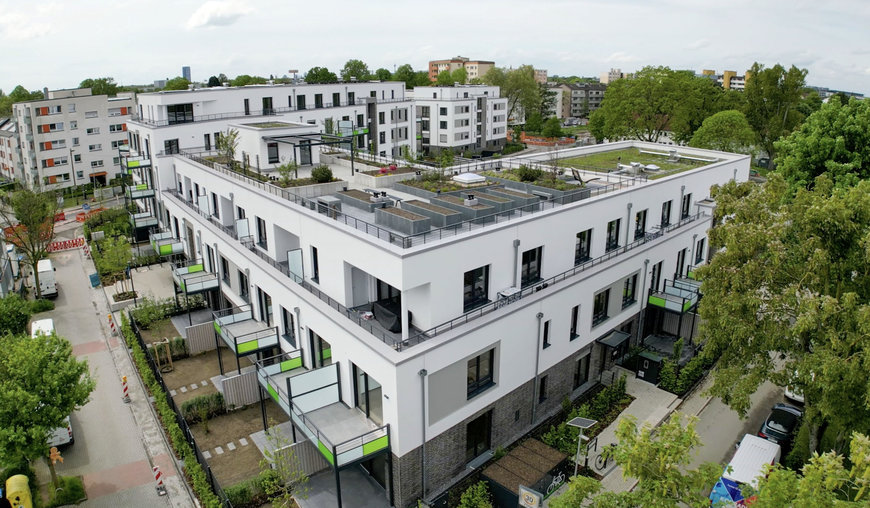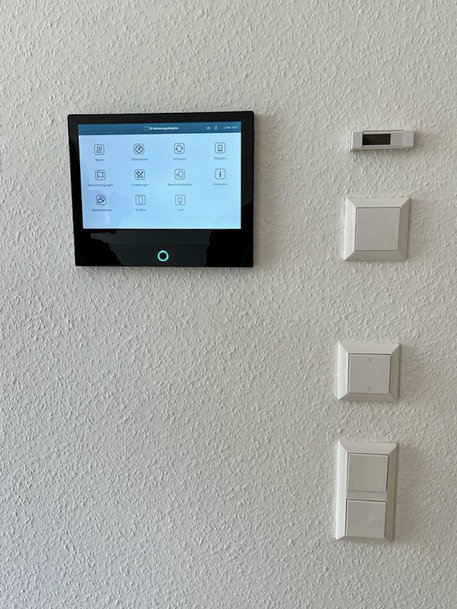smartbuildingmag.com
05
'24
Written on Modified on
Enocean Alliance News
Changing perceptions around smart buildings
By Graham Martin, Chairman and CEO of the EnOcean Alliance, explains how - alongside new builds - retrofits can become a new champion of energy-efficient and cost-effective building design.

A considerable amount of current housing is over half a century old and was obviously not built with home and building automation technologies in mind. In Europe, buildings are responsible for around 40% of total energy consumption as well as 36% of greenhouse gas emissions. This makes the building industry Europe’s single largest energy consumer, and one of the largest carbon dioxide emitters. Clearly, the building sector has a steep hill to climb in order to improve sustainability within the timeframes set out by the Paris Agreement.
By that same token, buildings also offer vast - and largely untapped - potential to save energy whilst leveraging new smart technologies. In doing so, the quality of life for the people who live and work within these buildings can be dramatically improved. In recent years, many of the most high-profile smart building projects have been in commercial new builds in urban areas. Whilst these projects should rightly be celebrated, they represent a mere fraction of the buildings. Properties built before 1980 are ripe for modernisation but needless to say, they were not designed to accommodate a 21st-century way of life.
The needs of the household have clearly evolved: indeed, some features of the modern home could be described as “smart” (e.g. smart electricity and water meters, smart doorbells and voice assistants like Alexa and Google Assistant). Even so, many households are reluctant to embrace smart technology on anything more than a piecemeal basis. There are a number of reasons for this, but one of the major barriers to a widespread rollout is the perception that smart technologies are expensive, complicated or not particularly useful. For now, the fully integrated smart home remains largely the preserve of the very rich, or the very tech-savvy.
However, recent developments have made smart functionality far more accessible, for new builds and older buildings alike. Crucially, technological innovations have also made these upgrades far more affordable.
To accelerate the transition towards smarter buildings, two things need to happen. One is that Governments need to legislate in order to expedite the issue. From an environmental perspective, the case for doing so is unquestionable. Buildings offer vast potential to make a significant difference on the journey towards a decarbonised society. Indeed, even small improvements in the energy efficiency of buildings can have an enormous impact when scaled up across wider populations.
Therefore, more needs to be done to raise and enforce the minimum standards, which will in turn drive innovation across the sector and bring costs down for end users. Governments are already doing this by encouraging energy-efficient retrofits as well as higher standards for all new builds. However, against the backdrop of the wider drive towards net zero, rapid progress is needed to meet climate objectives.

The second thing that needs to happen is on the vendor side. Technology providers must work together more closely. The EnOcean Alliance seeks to enable and promote interoperable, maintenance-free ecosystems based on the wireless EnOcean radio standard (ISO/IEC 14543-3-10/11). Keeping these ecosystems open is vital for encouraging rapid growth in the adoption of smart technologies. Moreover, it also makes these systems essentially future-proof, permitting easy upgrades as new solutions enter the market, whilst eliminating the risk of being locked into proprietary solutions.
The “Sonnenblumenfeld” project in Germany is an example of what can be achieved when you combine innovation, community, and political will. The residential complex of 96 energy-optimised apartments uses the “Zuhause-Plattform” smart building system featuring EnOcean self-powered wireless technology. As well as offering considerably more safety, security and comfort for the building’s residents, energy consumption can also be significantly reduced through building automation.
This residential complex, located in Düsseldorf-Lichtenbroich, consists of a U-shaped main building featuring 78 apartments and a roof garden plus a second unit with 18 two-room apartments. Many apartments have been designed specifically to cater for elderly residents, which necessitated the prioritisation of practicality and ease of use in any smart functionality.
Useful smart functions such as climate control, light control, shading control, access control, intercom system, smoke and leakage alarms, administrator and facility management contact, energy consumption data and many more features can be intuitively governed via a simple central display and control unit within the apartment.
The system also provides benefits for property owners and operators, with features such as automatic meter readings and automatic alerts in the event of, for example, a broken door or window pane. The automation of many of the climate control functions also has the potential to vastly improve the energy performance of the building. As a result of the savings, the apartments have comparatively lower rents compared to average apartments in the same area.
EnOcean technology was chosen for the sensor systems. The sensors and control units use energy harvesting to generate power from the environment: movement, sunlight, temperature variations and magnetic fields (or a combination of these) supply enough energy to power a sensor, operate a switch and transmit radio signals. The self-powered wireless devices are completely maintenance-free and require neither batteries nor mains power.
They can be installed on any surface - even on glass - in a matter of minutes, without the need for wiring and installation work. No mess, no disruption, and virtually no installation costs. This unique combination of advantages is especially important when modernising older properties.
In the Sonnenblumenfeld context, the Zuhause Plattform system can receive EnOcean signals as well as wireless M-Bus signals from the water, electricity and heating counters within the apartment in order to enable intelligent consumption analysis. The administrator can access mid-month and end-of-month consumption data as required.
The success of this project can in part be attributed to commitment from the German government to promoting smart and sustainable building technologies. For example, it has recently implemented the Building Energy Act, which was developed in response to the EU’s Energy Performance of Buildings Directive (EPBD), and specifically its revisions in 2018 and 2023. The directive has the ultimate goal of making the building stock in the EU close to carbon neutral by 2050.
Germany’s Building Energy Act means that from 2024 all new non-residential builds must have smart automation, while other buildings must be retrofitted with smart automation over the next 20 years, with the first milestones to be reached in 2024 and 2030. All new builds (residential or non-residential) must follow strict energy and sustainability laws, with new fossil-based fuel heating being effectively banned in the future. All EU Member States are committed to adopt the EPBD.
Projects like the Sonnenblumenfeld complex show that “smart” doesn’t necessarily mean “complex”. It can be simple, affordable, and efficient. Building automation has been proven to deliver significant improvements in security, safety and comfort with greatly reduced energy consumption. Crucially, with technologies like EnOcean providing the building blocks for innovation, smart automation can be implemented with ease and at a relatively low cost within almost any building, old or new.
www.enocean-alliance.com

